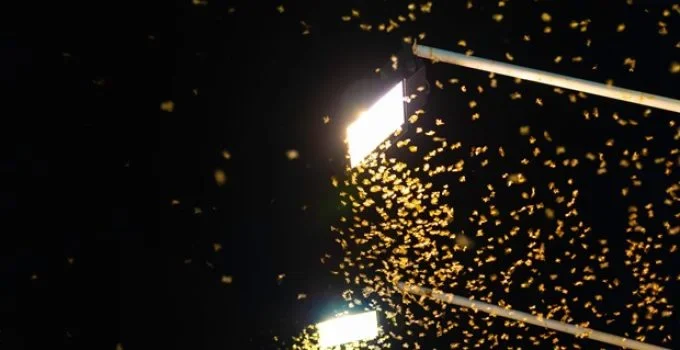Are Termites Attracted to Light?
Yes—but not all termites are attracted to light. The phenomenon, known as positive phototaxis, occurs primarily in reproductive termites during specific phases of their life cycle. Most termites are light-averse, preferring dark, humid environments. However, during swarming events, certain species are drawn to artificial lights, especially at night. Understanding why this happens can help in identifying infestations and preventing indoor swarm activity.
Dive Deeper
- Why Are Some Termites Attracted to Light?
- Which Termites Show This Behavior?
- Termites vs. Other Light-Loving Insects
- Helpful Table: Phototaxis in Termite Castes
- 🎯 Final Thoughts
- 📚 References
Why Are Some Termites Attracted to Light?
Phototaxis is the movement of an organism toward or away from light. While most termite workers and soldiers are negatively phototactic (avoid light), alates—winged reproductive termites—become positively phototactic during nuptial flights [1].
These reproductive flights are triggered by environmental cues like:
- Warm temperatures
- High humidity
- Recent rain
- Seasonal light cycles
🌍 According to the National Pest Management Association, termites cause over $5 billion in property damage annually in the U.S.—often going undetected until visible signs like swarms appear [2].
Which Termites Show This Behavior?
Only one caste of termite—the alate or reproductive—is attracted to light, and only temporarily. Here’s how the castes behave:
- Alates (reproductives):
- Grow wings and leave the nest to start new colonies
- Attracted to porch lights, windows, and streetlamps at night [1][3]
- Workers and soldiers:
- Avoid light
- Operate underground or inside wood
✅ Key Insight: Light-attracted termites are almost always swarming alates, not the wood-destroying workers seen within structures.
Termites vs. Other Light-Loving Insects
You might wonder: how do termites compare to other insects like moths?
- Moths: Strongly and consistently attracted to light
- Beetles: Some species are drawn to lights during mating
- Termites: Only specific reproductive castes, only during swarming
🔦 Fun Fact: According to a 2020 study in Insects, LED lights may attract more flying insects than older incandescent bulbs—and this could include swarming termites [4].
Helpful Table: Phototaxis in Termite Castes
| Termite Caste | Role | Light Attraction? | When? |
|---|---|---|---|
| Alate (Reproductive) | Forms new colonies | Yes | During swarming events (spring/fall) |
| Worker | Feeds, builds tunnels | No | Always avoids light |
| Soldier | Defends the colony | No | Remains in darkness |
| Queen/King | Reproductive, stay in colony | No | Permanently hidden underground |
🎯 Final Thoughts
So, are termites attracted to light? Only under very specific conditions. If you see flying termites around lights, you’re witnessing a swarming event—a signal that a mature colony may be nearby.
- Only alates are drawn to light
- Their attraction is brief and seasonal
- Spotting them indoors often means infestation is likely
Knowing when and why termites are drawn to light can help homeowners take preventive action, especially during swarming seasons.
📚 References
- Krishna, K., & Weesner, F. M. Biology of Termites. Academic Press, 1969.
- National Pest Management Association (NPMA). “Termites 101.” PestWorld.org, 2023.
🔗 https://www.pestworld.org/pest-guide/termites/ - Su, N.-Y., & Scheffrahn, R. H. “A Review of Subterranean Termite Control Practices and Prospects for IPM.” Integrated Pest Management Reviews, vol. 1, no. 1, 1996, pp. 1–13.
🔗 https://link.springer.com/article/10.1007/BF01193846 - van Grunsven, R. H. A., et al. “Effects of LED Lights on Insects.” Insects, vol. 11, no. 2, 2020.
🔗 https://doi.org/10.3390/insects11020102
